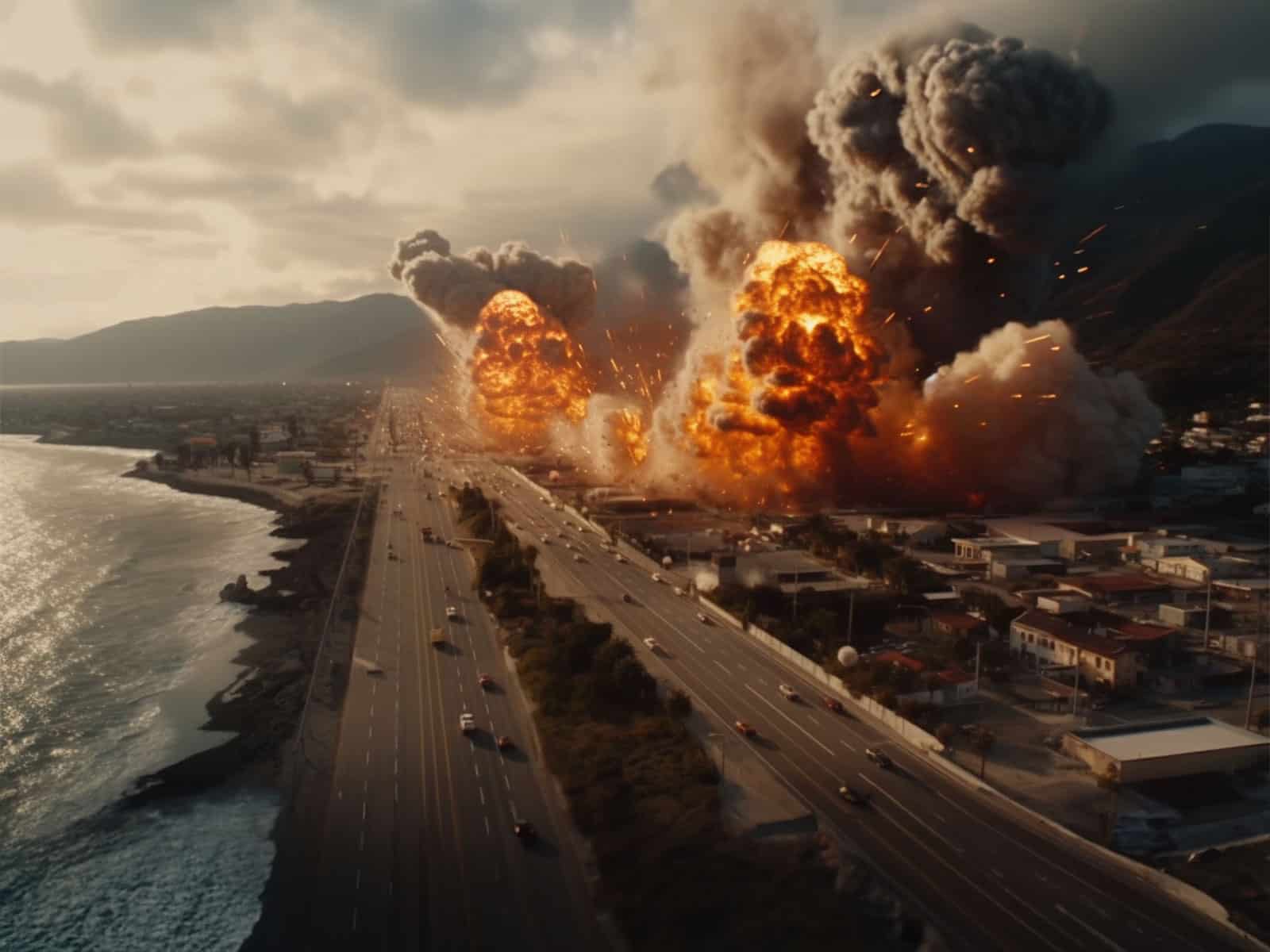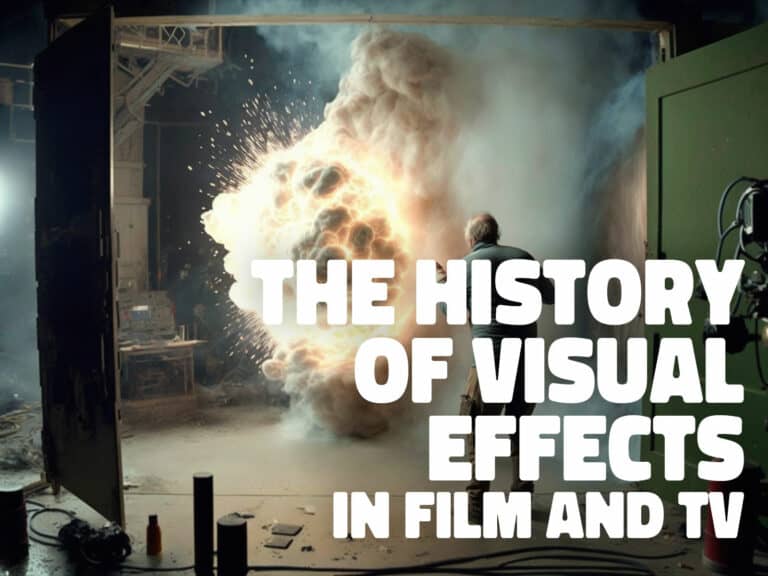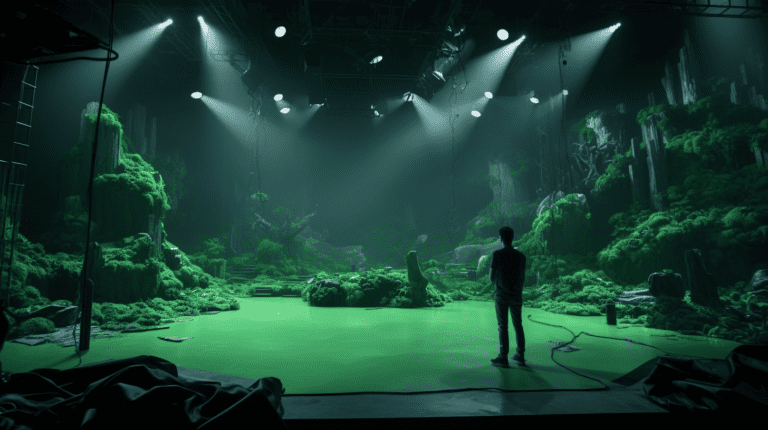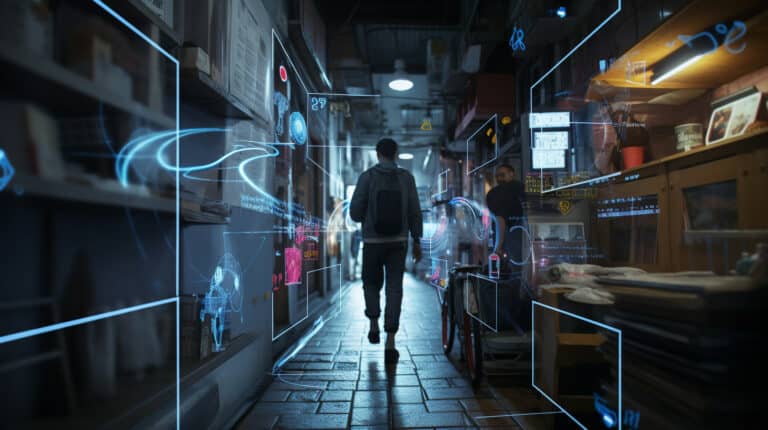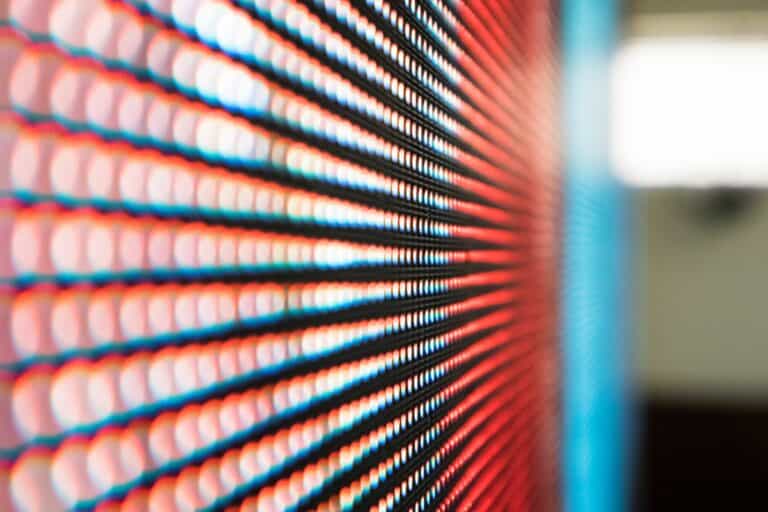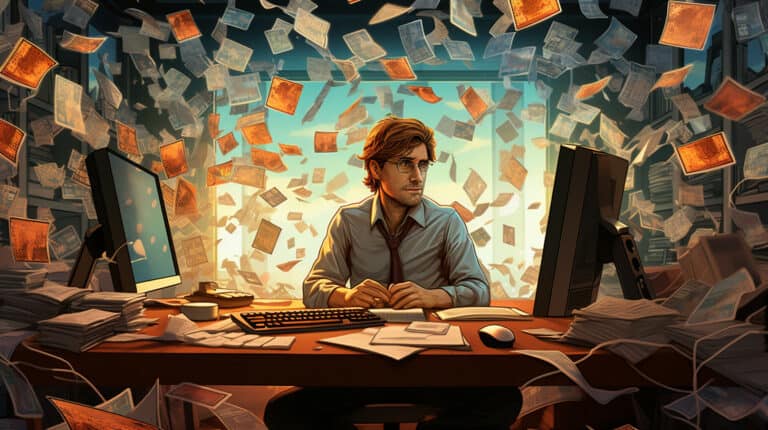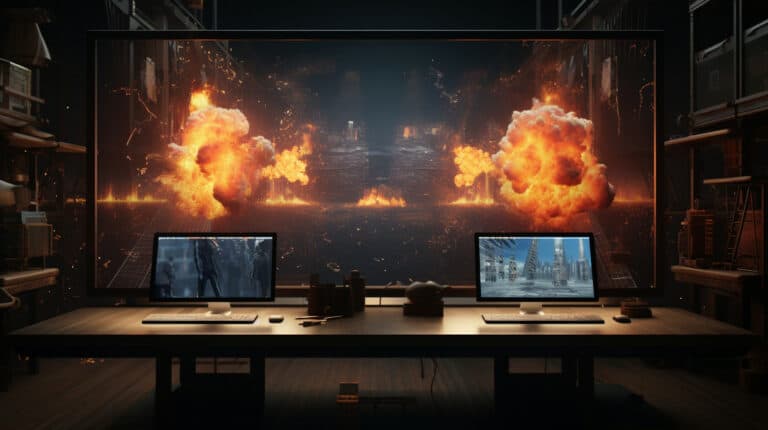What is VFX: A Concise Guide to Visual Effects
VFX, short for visual effects, is the art of creating or manipulating imagery outside the context of live-action footage. It has become an essential part of the modern entertainment industry, transforming movies and television shows into visually stunning and captivating experiences.
What is VFX?
VFX stands for visual effects, which are created or manipulated imagery integrated within live-action scenes in filmmaking and video production. The full form of VFX encompasses both practical effects and computer-generated imagery (CGI) elements to achieve a realistic and seamless on-screen appearance.
Some might think of visual effects solely as computer graphics as if CGI VFX is the entirety of the visual effects industry.
However, as you delve deeper into the world of VFX, you’ll find that its primary goal is to make the impossible appear real. From constructing vast, otherworldly landscapes to designing intricate creatures, visual effects play a significant role in bringing movies and other media to life.
Visual effects artists use a variety of software tools and techniques to create stunning visuals that captivate audiences around the world.
Some key aspects of VFX include:
- Compositing: The process of combining various visual elements, such as live-action footage and CGI objects, to create a single, cohesive image or sequence.
- Simulation: The creation of realistic natural phenomena, like fire, water, or smoke, using advanced computer algorithms.
- Animation: Bringing digital characters and objects to life with lifelike movement and expressions.
- Tracking: Matching the movement and position of CGI elements to those of live-action footage, ensuring seamless integration between digital and practical elements.
Whether it’s enhancing an action sequence with explosions or morphing an actor into an entirely different being, VFX has become an essential component for storytellers seeking to take their audience on a visual journey beyond the realm of reality.
Understanding VFX
Origins and Evolution
VFX, or visual effects, involves the creation, manipulation, or enhancement of imagery for films and other types of moving media without live-action shooting. These effects have evolved significantly over the years, with early examples dating back to the 1910s when filmmakers used double exposure or painted backgrounds.
The development of computer technology and software in the late 20th century revolutionized the VFX industry, enabling artists to create more realistic and sophisticated digital imagery.
Difference Between VFX and SFX
It’s essential for you to understand the difference between VFX and SFX, which stands for special effects.
While both terms involve creating illusions for movies and media, VFX is generally more focused on digital manipulation using computer software, while SFX refers to practical, in-camera effects that are captured during live-action filming. These can include pyrotechnics, prosthetic makeup, or physical props. In summary, VFX is digital effects, and SFX is practical effects.
Roles and Responsibilities of VFX Artists
As a VFX artist, your responsibilities span a variety of tasks and roles within the production process.
Some key roles in the VFX industry include:
- VFX Supervisors: Serve as the on set representation of the VFX team.
- VFX Producers: Oversee, coordinate, and manage all aspects of a production’s visual effects.
- Concept Artist: A visual artist that is responsible for creating the look and tone of a film. Often times this is the initial visual representation of VFX elements, providing a blueprint for later stages of production.
- Modelers: Create 3D models and assets that will be used in the final VFX scenes.
- Animators: Bring 3D models and characters to life by applying motion and movement, giving them a sense of realism.
- Compositors: Responsible for combining multiple images and VFX elements with live-action footage, merging them seamlessly into a cohesive final image.
- FX Artists: Specialize in creating specific types of VFX, such as simulations of natural phenomena like fire, smoke, or water.
As you progress in your VFX career, you may work on various aspects of visual effects, from initial concept development to the final rendering of the VFX images. Your ultimate goal is to create realistic and believable visual effects that enhance the viewer’s experience and help tell the story more effectively.
Notable VFX Breakthroughs in Film and TV
The following is a brief list of some of the most notable VFX examples throughout cinema history. From traditional visual effects accomplished with film cameras and optical compositing to modern digital technology with the use of a digital camera or even performance capture.
2001: A Space Odyssey
In 1968, “2001: A Space Odyssey” revolutionized visual effects with its groundbreaking use of practical and optical effects. This film introduced you to seamless and realistic space travel, paving the way for future sci-fi films.
Star Wars
Your love for the “Star Wars” saga may have been ignited by its innovative use of VFX. George Lucas’ 1977 blockbuster pushed the boundaries of what was possible with visual effects, especially with the creation of detailed, intricate models and miniatures. These techniques laid the foundation for future VFX advancements in filmmaking.
Terminator 2: Judgment Day
In 1991, “Terminator 2: Judgment Day” showcased groundbreaking visual effects with its use of 3D computer-generated imagery (CGI). The iconic liquid metal T-1000 remains a standout in the history of VFX, demonstrating the potential of merging live-action footage with CGI.
Jurassic Park
In 1993, “Jurassic Park” brought dinosaurs back to life through a combination of animatronics and CGI, setting a new standard for visual effects. This film proved to be a turning point for CGI implementation, making you believe that these prehistoric creatures were truly alive.
The Matrix
As you reminisce about “The Matrix” (1999), you probably remember its innovative VFX techniques, such as the famous “bullet time” effect, which defied the laws of physics. Through the use of these effects, you were transported into a computer-simulated reality that was both captivating and ground-breaking.
The Lord of the Rings
“The Lord of the Rings” trilogy (2001–2003) not only utilized advanced visual effects techniques but also introduced new ways of using them. Your journey through Middle-earth was enhanced by the incredible digital environments, massive battle sequences, and the seamless integration of actors with their computer-generated counterparts.
Avatar
“Avatar” (2009) shattered expectations and set new standards for VFX with its pioneering use of 3D motion capture technology. As you entered the world of Pandora, you witnessed the seamless blending of live-action and CGI characters, creating a truly immersive and fantastical experience.
Key VFX Techniques
Compositing
Compositing is the process of combining various layers of live-action footage and CGI elements to create a single, seamless image.
Compositing is the art of digital image manipulation, and it helps to make the VFX look real and believable. In your work, you may use software such as Adobe After Effects or Nuke to effectively blend the elements and create an appealing visual.
Green Screen and Chroma Keying
Green screen and chroma keying are crucial techniques in VFX, allowing you to replace a solid-colored background with any other image or video. When shooting, ensure your subject is in front of an evenly lit green or blue screen.
In post-production, use digital compositing software like Nuke or Adobe After Effects to remove the green background and replace it with your desired environment. In some cases editing software is capable of performing adequate green screen VFX compositing.
Rotoscoping
Rotoscoping is a process of manually tracing over live-action footage frame-by-frame to create a mask or matte.
This technique helps with isolating objects or characters, so you can manipulate them separately from the background. It can be time-consuming, but software such as Mocha, Adobe After Effects, Nuke, and Autodesk’s Silhouette can simplify the task.
Matte Painting
Matte painting helps to create stunning backgrounds or extend existing environments that would be too expensive or impossible to build or film.
Using digital painting tools like Photoshop and 3D VFX software you can create realistic images that blend seamlessly with live-action footage.
Motion Capture
Motion capture technology records the movements of a human actor and translates them into digital data. This data can then be applied to a 3D model, allowing it to move in a natural and realistic way.
The technology is commonly used in the creation of digital characters and animals in films and video games. Popular motion capture solutions include Vicon, OptiTrack, and Xsens.
3D Modeling
3D modeling involves creating a digital representation of a physical object or character using specialized software like Maya, Blender, or 3ds Max.
These models can be textured, animated, and integrated into the live-action footage to create a believable and realistic VFX scene. Incorporating 3D models can add depth and dimension to your visual effects work.
The VFX Production Process
Pre-production
In the pre-production stage of VFX, you’ll start by discussing ideas and developing concept art or storyboards to set the foundation for your visual effects.
This is the stage where you’ll plan and gather all necessary resources, such as reference materials and assets, required for your VFX project. You may also use software like Adobe After Effects or Houdini to create pre-visualizations and experiment with different VFX ideas.
As part of pre-production, you should:
- Create concept art and storyboards
- Plan your VFX pipeline and workflow
- Choose the appropriate VFX software and tools
- Gather references and assets to assist with VFX creation
Production
During the production phase, you’ll start incorporating visual effects into your filmed footage. This often involves shooting live-action elements with green screens or other techniques to help seamlessly integrate VFX elements later.
Many VFX artists use tools like Autodesk Maya to create Computer-Generated Imagery (CGI) and Motion Capture methods to record the movements of actors for realistic character animation.
In the production stage, it’s essential to:
- Ensure live-action footage is captured with VFX in mind
- Create CGI elements, utilizing tools such as Autodesk Maya
- Record motion capture data for character animations when needed
- Keep organized and structured project files to facilitate a smooth workflow
Post-production
Post-production is when you’ll bring all the elements together and polish your VFX until they’re ready for the final product. This includes compositing, where you’ll merge live-action footage with CGI elements and seamlessly blend them. To achieve this, you may use industry-standard software like Adobe After Effects and Houdini.
During editing, you’ll also perform additional enhancements such as color grading and visual and sound adjustments. This is to ensure that the visual effects align with the overall tone and style of the project.
In post-production, remember to:
- Composite live-action and CGI elements using VFX tools
- Apply color grading and visual enhancements
- Make sound adjustments for a cohesive experience
- Review your final product for any inconsistencies or needed improvements
By following these steps in the VFX production process, you can create captivating visual effects that enhance storytelling and immerse viewers into your project’s world.
Challenges and Future of VFX
Innovations and Cutting-Edge Technology
As you venture into the visual effects industry, it’s essential to stay updated with cutting-edge technology and innovations. Hollywood blockbusters and top-tier movies often use state-of-the-art technologies like Blender, which helps create stunning visuals.
However, adopting these new tools might require significant investment and training.
While working on VFX projects, you may face challenges in matching the perspective and parallax of VFX elements with live-action footage or virtual environments. This demands careful planning and measurement to achieve seamless integration.
HDR and Display Standards
Another challenge in VFX is working with HDR – as many displays don’t support HDR and for those that do, they’re likely to support different standards. For example, Dolby Vision HDR vs. HDR10 may cause discrepancies for VFX artists and studios.
The Importance of Creativity and Communication
Creativity
The success of your VFX work largely depends on your creativity. Cutting-edge technology can only take you so far; it is ultimately your artistic vision that distinguishes your work. As you hone your skills, focus on developing your creativity to create extraordinary, immersive visuals that captivate audiences.
- Use technology to complement your artistic vision
- Experiment with different techniques and styles
- Continuously learn and stay inspired by other artists
Communication
In the VFX industry, effective communication is vital. Collaborating with other team members and understanding the needs of the project is crucial to achieving the desired result. As a VFX professional, you should:
- Clearly understand the project’s goals and expectations
- Regularly communicate with team members or clients for updates and alignment
- Provide constructive feedback and be open to receiving it from others
Harnessing the power of cutting-edge technology, coupled with your creativity and communication skills, will prepare you for the exciting challenges and future in the world of VFX.
Wrapping Up
In conclusion, Visual Effects have become an integral part of the film industry to create environments and characters. By understanding and leveraging the types of visual effects and the VFX production process, harnessing cutting-edge technologies, and honing your creativity and communication skills, you can create captivating visual effects that draw audiences into the world you create. With passion and dedication, you can become a VFX professional with an impressive portfolio of stunning visuals.
Frequently Asked Questions
How does VFX work in films?
VFX, or Visual Effects, is created by digitally manipulating and enhancing live-action footage. In films, VFX is used to create realistic environments, characters, and scenarios that would otherwise be impossible to achieve. To accomplish this, you’ll often see a combination of green screens, motion capture, and CGI (Computer-Generated Imagery) being used. As a result, VFX allows filmmakers to fully immerse their audience in a believable and captivating world.
VFX vs. CGI differences?
Although VFX and CGI are often used interchangeably, they are distinct in terms of their application and scope. VFX is the broader term that encompasses all aspects of digital effects used in films and other visual mediums, while CGI specifically refers to the creation of 3D models, textures, and animations within that context. In essence, CGI is a subset of VFX, and both are used together to create stunning visual storytelling.
What is the role of a VFX artist?
As a VFX artist, your role is to design, create, and implement digital effects in film, TV shows, or other visual mediums. You will work alongside other creative professionals, such as directors, cinematographers, and production designers, to bring their vision to life. Your skills in various software programs, a strong sense of aesthetics, and the ability to collaborate effectively are all essential for success in this field.
What are popular VFX techniques?
Some popular VFX techniques you may encounter include:
- Compositing: Combining different elements, such as live-action footage and CGI, into a single, seamless image.
- Matte Painting: Creating a painted scenery or backdrop that is integrated into the live-action footage.
- Rotoscoping: Tracing over live-action footage to create a more stylized or animated look.
- Green Screen/Chroma Keying: Filming against a green or blue screen, which is later replaced with a different background or environment.
- Motion Capture: Recording human movement and translating it into a digital character or model.
How to learn VFX skills?
To learn VFX skills, you should start by familiarizing yourself with relevant software programs such as After Effects, Cinema 4D, or Nuke. It is also useful to study the principles of animation, 3D modeling, and cinematography. Taking online courses, attending workshops, or enrolling in a specialized school can provide you with a strong foundation to build upon. Additionally, practice and experimentation are crucial for refining your skills and finding your unique artistic voice.

